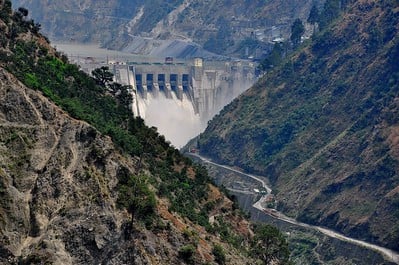Amidst escalating tensions on the Korean peninsula, the arrival of the USS Carl Vinson, a nuclear-powered aircraft carrier, in South Korea has sparked global attention. Reports suggest North Korea’s plans for another satellite launch between Wednesday and December 1, prompting heightened concerns and strategic maneuvering by regional powers.
During a recent visit to Seoul as part of a broader Asia tour, U.S. Secretary of Defense Lloyd Austin assured that Washington is dedicated to ongoing deployments of formidable military assets to South Korea. In response to questions about the sustainability of such commitments amidst escalating global security threats, Austin confidently stated that the US, possessing the world’s most potent military, can manage multiple priorities concurrently. Austin emphasized the nation’s capability to effectively navigate and address diverse challenges, affirming, “We can walk and chew gum at the same time.”
The USS Carl Vinson’s docking in Busan follows a recent deployment of the USS Ronald Reagan, signaling the joint effort between South Korea and the U.S. to bolster military presence as a deterrent against North Korean aggression. However, while the U.S. military describes the aircraft carrier as a “self-contained mobile airport and strike platform,” officials have refrained from directly linking its arrival to North Korea’s potential satellite launch.
North Korea’s purported satellite launch attempts this year, though unsuccessful in May and August, underscore its persistent pursuit of space capabilities, ostensibly for peaceful purposes. However, analysts point out the dual-use nature of satellite technology, highlighting its potential contribution to enhancing North Korea’s ballistic missile program by gathering intelligence on foreign troop movements.
Japan’s Prime Minister Fumio Kishida condemned North Korea’s launch plans Tuesday, stating Tokyo’s intent to take all possible measures to ensure the country’s safety. Kishida expressed his commitment to coordinate efforts with the U.S., South Korea, and other countries to strongly urge North Korea to refrain from conducting the launch. He highlighted the violation of United Nations Security Council resolutions should North Korea employ ballistic missile technology under the guise of a satellite launch.
The deployment of high-powered military assets like the aircraft carriers is seen by some as a strategic move to demonstrate U.S. commitment to regional defense. Patrick M. Cronin, Asia-Pacific security chair at the Hudson Institute, views these deployments as a signal of U.S. readiness to counter aggression, particularly during potential provocations like a satellite launch.
However, divergent opinions exist regarding the efficacy of increased military presence. Ankit Panda, a Stanton senior fellow in the Nuclear Policy Program at the Carnegie Endowment for International Peace, argues that these deployments contribute minimally to deterring North Korea and instead foster an environment of heightened tensions. Panda asserts that such displays of military might primarily aim to reassure Seoul but may not significantly contribute to effectively deterring North Korea’s aggression. The differing viewpoints among analysts highlight the complexities of employing military strategies in addressing regional tensions.
Rear Adm. Kim Ji-hoon, Director of the Maritime Operations Center at the Republic of Korea (ROK) Fleet, emphasized that the visit of the US Carrier Strike Group 1 underscores the robust joint defense stance of the South Korea-US alliance. He highlighted its steadfast determination to counter evolving North Korean nuclear and missile threats, further emphasizing the significance of the joint efforts in the face of these escalating challenges.
The situation in the Korean peninsula remains delicate, with geopolitical stakes high and diplomatic efforts crucial to prevent further escalation. As the world observes developments in the region, the interplay between military posturing, diplomatic maneuvers, and regional stability underscores the need for cautious and calculated actions to mitigate tensions and promote lasting peace.
The potential ramifications of North Korea’s satellite launch plans and the subsequent response from regional powers necessitate a nuanced approach that balances deterrence with dialogue, emphasizing the critical role of diplomacy in resolving conflicts and ensuring stability in the region.


















